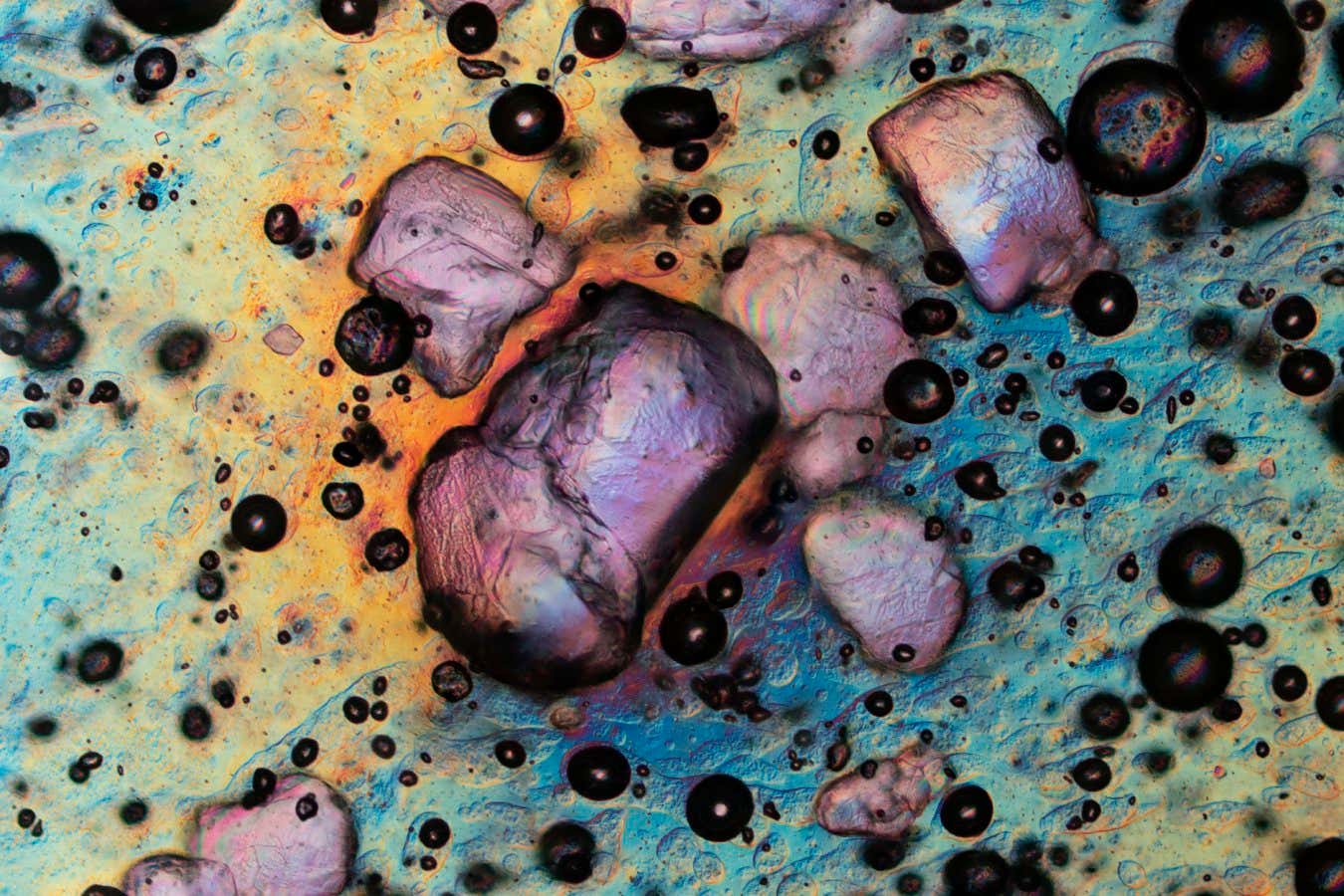
A thin crystalline film of table sugar, or sucrose, captured in a polarised light micrograph
KARL GAFF/SCIENCE PHOTO LIBRARY
Scientists have confected a new way to search for dark matter using giant crystals of sucrose, or table sugar – though, so far, they have found only the bittersweet taste of a lack of results.
We believe that dark matter exists based on the strange gravitational pull it appears to exert on galaxies, but despite decades searching for possible dark matter particles, scientists have found nothing. Many of these searches looked for weakly interacting massive particles (WIMPs), which were long thought to be among the most promising dark matter candidates. But even the most sensitive searches came up empty handed.
Most WIMP detectors look for flashes of light that a passing dark matter particle might produce when it interacts with regular matter, but this assume the particles are sufficiently large, around 2 to 10,000 times the mass of a proton. This is what would explain dark matter’s galactic effects most clearly, but it is also possible that WIMPs are lighter, even though this fits more awkwardly with the hypothesis.
Now, Federica Petricca at the Max Planck Institute for Physics in Munich, Germany, and her colleagues have searched for these lighter WIMPs using a detector made from sugar crystals cooled to extreme temperatures.
Very light WIMPs should interact most obviously with very light atoms, like hydrogen, but using pure hydrogen as a detector is difficult because of its low density, reducing the chances of an interaction. Sucrose, however, contains 22 hydrogen atoms on each molecule, at a far higher density than pure hydrogen.
Petricca and her team first grew crystals of sucrose from a concentrated sugar solution over a period of a week, before lowering the temperature of the crystals to seven thousandths of a degree above absolute zero. They then watched for possible dark matter interactions by looking for tiny increases in heat, using an ultrasensitive thermometer, and flashes of light, using a photon sensor.
The researchers ran their experiment for 19 hours and, while the sugar crystals did light up at levels consistent with larger particles, they didn’t measure any weaker detections that could have been produced by a WIMP.
The sugar crystals have been set up to look for possible dark matter interactions with remarkable sensitivity, says Carlos Blanco at Pennsylvania State University, and they could allow researchers to see extremely small recoils from light WIMPs. However, it isn’t clear whether the experiment is able to effectively rule out other possible sources lighting up the crystals, such as the radioactive carbon-14 that is commonly found in many sugars.
CERN and Mont Blanc, dark and frozen matter: Switzerland and France
Prepare to have your mind blown by CERN, Europe’s particle physics centre, where researchers operate the famous Large Hadron Collider, nestled near the charming Swiss lakeside city of Geneva.
Topics:
Source link : https://www.newscientist.com/article/2500538-we-can-use-ordinary-sugar-in-the-search-for-dark-matter/?utm_campaign=RSS%7CNSNS&utm_source=NSNS&utm_medium=RSS&utm_content=home
Author :
Publish date : 2025-10-17 15:59:00
Copyright for syndicated content belongs to the linked Source.